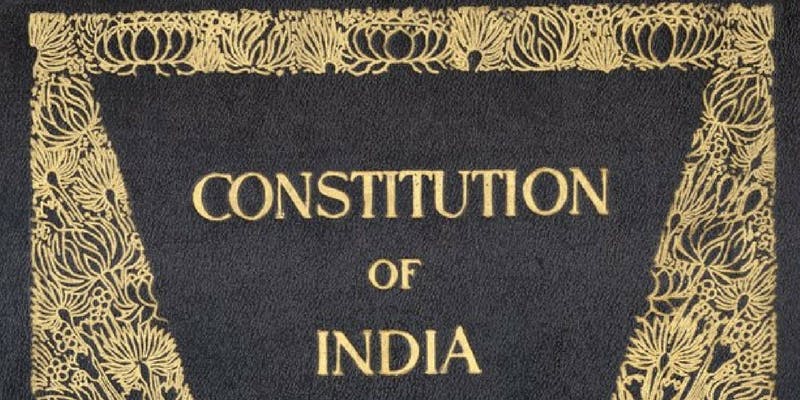Table of Contents
Judicial Pendency of cases in Indian Courts | UPSC – IAS
Pendency of cases across courts in India has increased in the last decade. In this article, we present data related to pendency of cases and vacancy of judges in the Supreme Court, High Courts, and subordinate courts.
- In the Supreme Court, more than 30% of pending cases are more than five years old while in the Allahabad High Court, 15% of the appeals have been pending since 1980s.
- A Law Commission report in 2009 had quoted that it would require 464 years to clear the arrears with the present strength of judges.
As per the National Judicial Data Grid (NJDG), in 2018,
- 2.93 crore cases are pending in the subordinate courts,
- 49 lakhs in High Courts and
- 57,987 cases in Supreme Court.
Five states which account for the highest pendency are:-
- Uttar Pradesh (61.58 lakh),
- Maharashtra (33.22 lakh),
- West Bengal (17.59 lakh),
- Bihar (16.58 lakh) and
- Gujarat (16.45 lakh).
Reasons for pendency of cases in Indian courts | UPSC – IAS
- Shortage of judges – around 5,580 or 25% of posts are lying empty in the subordinate courts. It leads to poor Judges to Population Ratio, as India has only 20 judges per million population. Earlier, Law Commission had recommended 50 judges per million.
- Frequent adjournments- The laid down procedure of allowing a maximum of three adjournments per case is not followed in over 50 per cent of the matters being heard by courts, leading to rising pendency of cases.
- Low budgetary allocation leading to poor infrastructure- India spends only about 0.09% of its GDP to maintain the judicial infrastructure. Infrastructure status of lower courts of the country is miserably grim due to which they fail to deliver quality judgements. A 2016 report published by the Supreme Court showed that existing infrastructure could accommodate only 15,540 judicial officers against the all-India sanctioned strength of 20,558.
- Burden of government cases- Statistics provided by LIMBS shows that the Centre and the States were responsible for over 46% of the pending cases in Indian courts.
- Special leave petition cases in the Supreme Court, currently comprises to 40% of the court’s pendency. Which eventually leads to reduced time for the cases related to constitutional issues.
- Judges Vacation- Supreme Court’s works on average for 188 days a year, while apex court rules specify minimum of 225 days of work.
- Lack of court management systems- Courts have created dedicated posts for court managers to help improve court operations, optimise case movement and judicial time. However only few courts have filled up such posts so far.
- Inefficient investigation- Police are quite often handicapped in undertaking effective investigation for want of modern and scientific tools to collect evidences.
- Increasing Literacy- With people becoming more aware of their rights and the obligations of the State towards them, they approach the courts more frequently in case of any violation.
Impacts of Judicial Pendency | UPSC – IAS
- Denial of ‘timely justice’ amounts to denial of ‘justice’ itself– Timely disposal of cases is essential to maintain rule of law and provide access to justice. Speedy trial is a part of right to life and liberty guaranteed under Article 21 of the Constitution.
- Erodes social infrastructure- a weak judiciary has a negative effect on social development, which leads to: lower per capita income; higher poverty rates; poorer public infrastructure; and, higher crime rates.
- Overcrowding of the prisons, already infrastructure deficient, in some cases beyond 150% of the capacity, results in “violation of human rights”.
- Affects the economy of the country as it was estimated that judicial delays cost India around 1.5% of its Gross Domestic Product annually.
As per the Economic Survey 2017-18 pendency hampers dispute resolution, contract enforcement, discourage investments, stall projects, hamper tax collection and escalate legal costs which leads to Increasing cost of doing business.
Ways to lower the Pendency of cases in the Indian courts| UPSC – IAS
- Improving infrastructure for quality justice- The Parliamentary Standing Committee which presented its report on Infrastructure Development and Strengthening of Subordinate Courts, suggested:
- States should provide suitable land for construction of court buildings etc. It should undertake vertical construction in light of shortage of land.
- Timeline set out for computerisation of all the courts, as a necessary step towards setting up of e- courts.
- Addressing the Issue of Vacancies- Ensure the appointments of the judges be done in an efficient way by arriving at an optimal judge strength to handle the cases pending in the system. The 120th Law Commission of India report for the first time, suggested a judge strength fixation formula.
- Supreme Court and High Courts should appoint efficient and experienced judges as Ad-hoc judges in accordance with the Constitution.
- All India Judicial Service, which would benefit the subordinate judiciary by increasing quality of judges and help reduce the pendency.
- Having a definite time frame to dispose the cases by setting annual targets and action plans for the subordinate judiciary and the High Courts. The judicial officers could be issued a strict code of conduct, to ensure that the duties are adequately performed by the officials.
- Strict regulation of adjournments and imposition of exemplary costs for seeking it on flimsy grounds especially at the trial stage and not permitting dilution of time frames specified in Civil Procedure Code.
- Better Court Management System & Reliable Data Collection: For this categorization of cases on the basis of urgency and priority along with bunching of cases should be done.
- Use of Information technology (IT) solutions- The use of technology for tracking and monitoring cases and in providing relevant information to make justice litigant friendly. A greater impetus should be given to
- Process reengineering- Involves redesigning of core business processes to achieve dramatic improvements in productivity and quality by incorporating the use of technology in court rules. It will include:
- Electronic filing of cases: e-Courts are a welcome step in this direction, as they give case status and case history of all the pending cases across High courts and Subordinate courts bringing ease of access to information.
- Revamping of National Judicial Data Grid by introducing a new type of search known as elastic search, which is closer to the artificial intelligence.
- Alternate dispute resolution (ADR)- As stated in the Conference on National Initiative to Reduce Pendency and Delay in Judicial System- Legal Services Authorities should undertake pre-litigation mediation so that the inflow of cases into courts can be regulated.
- The Lok Adalat should be organized regularly for settling civil and family matters.
- Gram Nyayalayas, as an effective way to manage small claim disputes from rural areas which will help in decreasing the workload of the judicial institution.
- Village Legal Care & Support Centre can also be established by the High Courts to work at grass root level to make the State litigation friendly.
Conclusion | UPSC – IAS
The fundamental requirement of a good judicial administration is accessibility, affordability and speedy justice, which will not be realized until and unless the justice delivery system is made within the reach of the individual in a time bound manner and within a reasonable cost. Therefore, continuous formative assessment is the key to strengthen and reinforce the justice delivery system in India.











